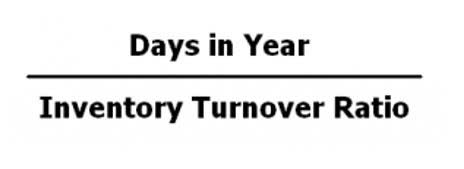
The company determines its variable costs for each chair are $75 for wood, $100 for direct labor, and $25 for variable overhead, totaling $200 per chair. It also helps a firm decide whether to manufacture a good or purchase it elsewhere. Moreover, this cost can be influenced by external factors such as inflation or fluctuations in currency values. Therefore, firms should undertake a thorough cost-benefit analysis to determine whether outsourcing presents an attractive financial proposition.
- Understanding this cost component assists in fine-tuning production strategies, improving efficiency, and informing important pricing and investment decisions.
- Discounted cash flow (DCF) analysis helps quantify the present value of future earnings, ensuring projected returns exceed the cost of capital.
- From a financial perspective, incremental cost refers to the change in total cost resulting from a particular decision or activity.
- Sensitivity analysis is a technique used to assess the impact of changes in key variables on the overall outcome of a decision or project.
Identifying Relevant Costs for Analysis
The fixed costs don’t usually change when incremental total incremental cost costs are added, meaning the cost of the equipment doesn’t fluctuate with production volumes. Conversely, “irrelevant costs” are those that do not change regardless of the decision made. These include sunk costs, which are expenses already incurred and cannot be recovered, such as past research and development or the original purchase price of existing equipment. Fixed costs constant across different production levels, like rent or administrative salaries, are excluded from incremental cost analysis unless the decision alters them. Understanding this distinction is important for accurate analysis, as including irrelevant costs can distort the financial picture and lead to suboptimal decisions.
Incremental Cost Per Unit Calculator
In this section, we delve into the concept of incremental cost and its significance in decision-making. Incremental cost refers to the additional cost incurred when taking a specific action or making a particular decision. It helps us understand the financial implications of our choices and aids in effective resource allocation. By analyzing them thoughtfully, businesses can make informed decisions and optimize their operations.
Material Handling Equipment: Types, Use Cases, and Application
Finally, accurate incremental cost information prevents the common business error of focusing on average costs for decision-making. While average costs include both fixed and variable components, business decisions should often consider only the costs that change with production levels. Companies that mix these concepts frequently make sub-optimal choices regarding production continuation, pricing, and expansion. Variable costs are expenses that change in direct proportion to the level of production or activity. Unlike fixed costs, which remain constant regardless of output, variable costs fluctuate as production volume varies.

Understanding Incremental Cost

Identifying and managing variable https://nhkcccan.com/how-to-calculate-cash-flow-7-cash-flow-formulas/ costs is essential for effective decision-making, pricing strategies, and resource allocation. Understanding the concept of incremental cost is crucial for decision making and cost-benefit analysis. Incremental cost refers to the change in total cost resulting from a specific decision or action. It helps businesses and individuals evaluate the financial impact of their choices.
- It helps organizations evaluate the impact of their decisions on costs and profitability.
- By comparing the incremental costs with the potential benefits, organizations can assess the profitability and feasibility of their decisions.
- Assuming a manufacturing company, ABC Ltd. has a production unit where the cost incurred in making 100 units of a product X is ₹ 2,000.
- Take your learning and productivity to the next level with our Premium Templates.
Examples of Incremental Cost in Business
The acceptance of the 5,000$ order depends upon the existence of idle HOA Accounting capacity and labor that would go underutilized in the absence of more profitable opportunities. Earley’s study of “excellently managed” large firms suggests that progressive corporations do make formal use of incremental analysis. It is, however, impossible to generalize on the use of incremental principle, since the observed behavior is variable. Suppose a firm has the opportunity to secure a special order if it offers a discounted price per unit. If managers calculate the incremental cost per unit, they might find it is $25 compared to an average cost of $40. However, if management offers a deeper price cut, it won’t cover the cost, and the firm will take a loss on the deal.

- In other words, incremental costs represent the change in total costs resulting from a specific decision or action.
- These ongoing expenses can add up and impact the profitability of the investment.
- Luxury car manufacturers invest in superior materials and craftsmanship, raising production costs.
- These can include research and development, manufacturing systems, distribution channels, marketing campaigns and product testing.
- The additional cost comprises relevant costs that only change in line with the decision to produce extra units.
- However, it requires significant planning and investment to cover the costs of expanding the new products.
Always weigh incremental costs against potential benefits and align them with your goals. Remember, incremental cost isn’t just about numbers; it’s about informed choices. Whether you’re optimizing production, launching a new product, or allocating resources, understanding incremental cost empowers better decision-making.